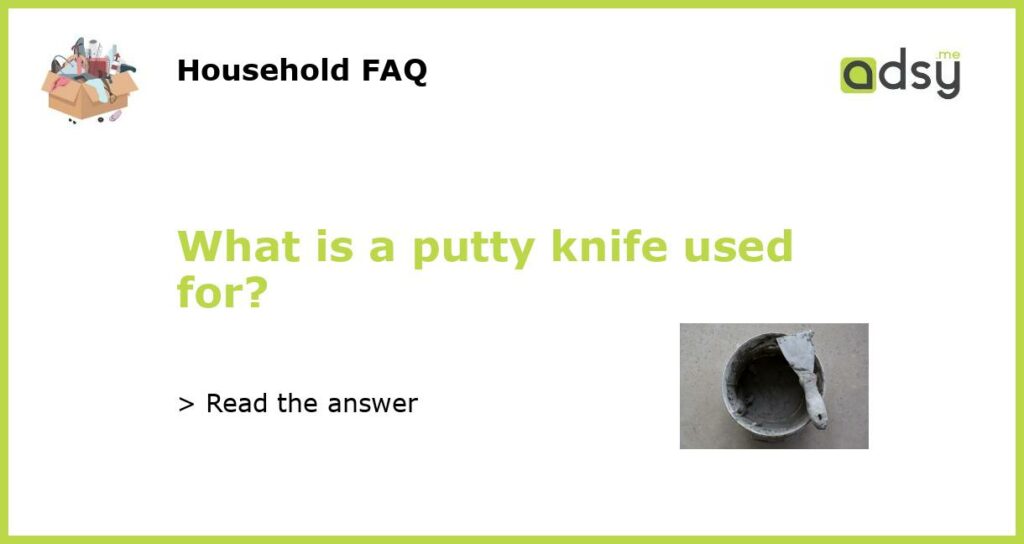Understanding the Basics of Putty Knife
If you are into painting and DIY projects, then you’ve probably come across a putty knife before. But for those who are new to the world of DIY, a putty knife is a versatile tool that can be used for a variety of tasks. In this article, we’ll explore what a putty knife is used for and how you can use it in your DIY projects.
What is a Putty Knife?
A putty knife is a flat metal or plastic blade that is used for smoothing, scraping, and spreading various materials such as putty, spackle, and caulk. It typically has a handle that can be made of wood, plastic or rubber which allows for a good grip while in use. Putty knives come in different shapes and sizes, and the type of project you’re working on will determine the size and shape of the putty knife you should use.
Uses of a Putty Knife
Putty knives are primarily used for filling small cracks and holes in walls, ceilings, and floors before painting. They are great for smoothing out joint compounds, spackling, and putties, ensuring a smooth and even surface before painting. Putty knives can also be used for scraping off old paint, wallpaper, or other materials that need to be removed from a surface before painting.
Another use of putty knives is in the application of caulk. Caulk is a sealant used to fill gaps between surfaces such as around windows and doors. A putty knife is great for applying and smoothing out caulk to ensure a clean and professional-looking finish.
How to Use a Putty Knife
When using a putty knife, it’s important to select the right size for the job. Smaller putty knives are ideal for filling small cracks and holes, while larger ones are more suitable for bigger jobs. Once you’ve selected the right size putty knife, use it to apply the putty or spackling material to the surface you’re working on.
Hold the putty knife at a comfortable angle while applying pressure to the material, spreading it evenly over the surface. If you’re using a putty knife to remove old paint, wallpaper, or other materials, use the knife at a steeper angle and scrape the surface gently.
Tips for Maintaining Your Putty Knife
Putty knives are durable tools, but with frequent use, they can become dull or rusty. After each use, wipe the blade with a damp cloth to remove any excess material. If you notice any rust or signs of wear and tear on the blade, use sandpaper to sand it down. Make sure to oil the blade after sanding it down to prevent rust from forming.
It’s important to store your putty knife in a dry and safe place to prevent it from getting damaged or rusty. If you take proper care of your putty knife, it will last for years and continue to be a valuable tool in your DIY kit.






